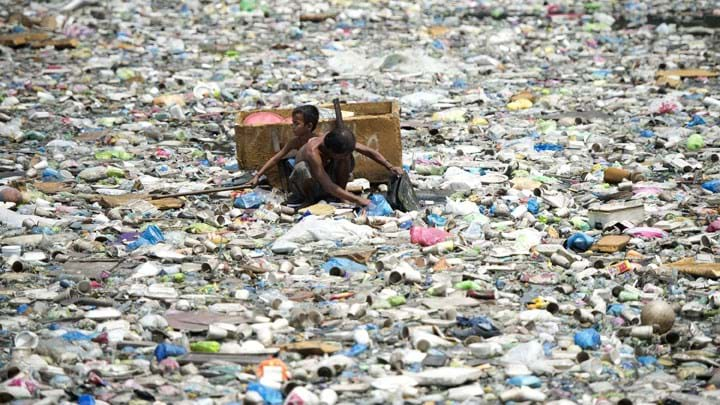Question Time: Materials

Adam Duckett shares the major talking points from the latest centenary webinar

IN the final themed webinar of IChemE’s Centenary, experts gathered to discuss the manufactured materials that shape our modern world and how chemical engineers can help to reduce the impact of our dependence on steel, cement and plastics.
Colin Brown said: “That impact can be through the emissions and waste products from their manufacture, or it could simply be the exhaustion of a finite resource…neither of those ways forward is sustainable. Everything is made of something and if we continue as we are we risk not only causing pollution through material use, and indeed climate change, but ultimately running out of reserves if there are no viable substitutes.”
He noted that technologists and free markets can lead on the change but that governments may need to intervene though this is likely to add cost and slow implementation.
“It will be interesting to see how we as engineers can drive this change, and the way in which we then rely on people who are not engineers.”
Miracle or a menace
Joseph Bailey gave the opening presentation on plastics. He contrasted the cheap, lightweight and sterile properties of plastic, which make it so valuable to the likes of the health industry, with its resistance to degradation over short timeframes and the pollution this leads to. He showed a startling photo of a father and son paddling a makeshift boat over a river of plastic, searching through it for items to sell.
“There’s a good debate to be had about whether plastic is a miracle material or a menace. I would say people are generally gearing toward the latter.”
Plastic has become used in all aspects of our lives, though the main source of growth is in plastic packaging.
“The overall picture is pretty damning,” he said, noting that over the course of history 79% of plastic has accumulated in landfill, 12% has been incinerated and just 9% has been recycled, and often into lower-grade products.
Projections are that plastic production will quadruple by 2050 and a higher proportion of oil output (20% compared to 6%) will be used to produce them as transportation fuels lose ground to electric. Bailey said that reducing the future impact will require new technologies including chemical recycling techniques but also fundamental redesigns of both the plastics that cannot be recycled and those products that contain plastic mixtures that cannot be separated.
“The size of the prize is huge” he said, noting that a report from Systemiq projected that closing the loop on plastics could save 1.6 Gt of cumulative CO2 emissions and create 160,000 jobs by 2050, though around 25% of capital being directed into chemical production needs to be deployed into low-carbon technologies.
Built environment
Iron and steel production are responsible for around 7% of global CO2 output, and cement alone a further 6.5%.
Paul Fennel reviewed the enabling technologies that are required to decarbonise the three methods of steelmaking. These are CCS for blast furnaces, which are responsible for around 61% of manufacture; cheap decarbonised electricity for electric arc furnaces (30% of production); and cheap hydrogen for direct iron reduction (5%).
Fennel said capturing carbon from blast furnace operations is challenging because of the numerous emissions sources, including the different furnaces and the sinter plant.
“It’s important to note that 74% of EU steel blast furnaces are requiring refurbishment by 2030,” he said, and it will decades again before the opportunity to implement CCS comes back round.
“If we miss the boat here, we’re somewhat challenged.”
Highlighting projects that are making progress on decarbonisation, Fennel said that in July the first CO2-free steel was delivered from the Hybrit project in Sweden to its customer Volvo. The project uses hydrogen and direct reduction.
On projects for decarbonising cement production, Fennel pointed to the Leilac II project in Germany that is demonstrating an indirectly-heated calcination process that separates the unavoidable CO2 process emissions.
Fennell added that it is important for manufacturers that carbon border adjustment costs are implemented to prevent imported cheap steel produced by dirtier methods undercutting greener domestic industries and driving industry and emissions offshore to less regulated countries.
He accepted that calculating the carbon footprints will prove contentious, but it is not an insurmountable problem given the many certifications that have already been developed for global trade, and that chemical engineers are already playing a role in developing related protocols.
Future materials, historic risks
Fang Xie reviewed graphene, which is in the early stages of use but whose exceptional properties mean it could find wide-scale application. For example its high strength could see it incorporated into composite materials that might offer greener alternatives to concrete. She warned though that the chemical vapour deposition method most commonly used to produce graphene at scale has the highest global warming potential.
“Graphene production needs to be compatible with the circular economy principle,” she said.
During the question-and-answer sessions, panel members were asked how important they felt diversity was for decarbonising materials. Bailey said: “We need a diversity of thought, we need new ideas, and different ways of doing things.” Fennel agreed: “Get a diverse force of chemical engineers on the job and set them to improving the processes.”
Leon Prentice, who presented on biomaterials sustainability urged teams to consider sustainability earlier in the design process. “Sometimes you see products or designs get to final prototype stage before anyone says: ‘Let’s think about how we can make this more sustainable’. That decision should have been made way earlier. It involves not just the materials designer, but the engineers who are going to build it, people who are going to register it, and thinking about the end user.”
Fang added that researchers need to think more holistically when developing materials, and that educators must make sure that the next generation consider the sustainability of future solutions rather than the narrower focus on efficiency that has been prevalent.
“If we focus on that route then we will end up like [we have] with plastic. It was a wonderful material in the 1970s. And now we have to clean it up.”
View the webinar recording here: https://bit.ly/3s7g2eQ

Join the centenary discussion. Next up: Volunteer recognition events
IChemE is hosting a series of volunteer recognition events to celebrate the work of the IChemE volunteer community by thanking them for their contribution during the
centenary and getting them to think about how, with their help we can ready IChemE for the challenges of the future. These are being held in Kuala Lumpur (5 November), London (9 November), Brisbane (17 November), and Manchester (23 November).
For more details and to register to attend, visit: https://bit.ly/3TpkBNo
Recent Editions
Catch up on the latest news, views and jobs from The Chemical Engineer. Below are the four latest issues. View a wider selection of the archive from within the Magazine section of this site.




